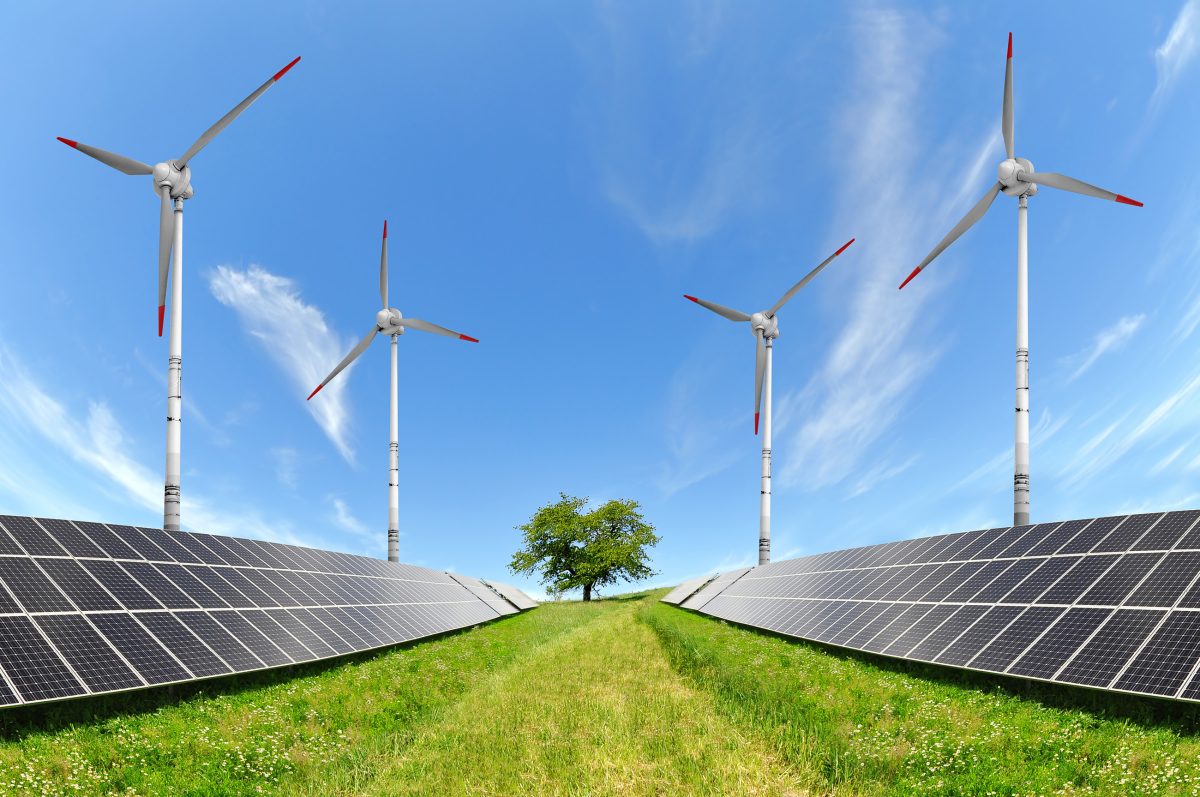
To bring renewable electricity sources online, new projects have to connect to the U.S. power grid. Growing federal support for green energy will likely increase the waiting time in this interconnection queue, but a mathematical model of the process can help alleviate this concern. Credit: Vaclav Volrab|Dreamstime.com.
Renewable energy is growing at a fast pace that will accelerate with increased funding from the 2022 Inflation Reduction Act. But bringing new wind and solar projects online involves a major bottleneck: a waitlist known as the interconnection queue.
When new electricity generators apply to connect to the U.S. power grid, they join that waitlist. At least one engineering study is required to determine the need for upgrades, such as new transmission lines or substations, and estimate their cost. The transmission operators—usually regulated public utilities—oversee these interconnection studies. It currently takes an average of four years from application to grid connection. The continued growth of renewable energy is expected to prolong that waiting time and exacerbate grid congestion.
Studying the queueing process is fascinating for economists like Sarah Johnston. “New generators start the process without knowing how much it will ultimately cost, which makes financial planning difficult,” says Johnston. “If the interconnection cost is very high, it may kill the project. On the other hand, if one generator pays for grid upgrades, the generators behind it in the queue may benefit.”
Johnston, her colleague Chenyu Yang at the University of Maryland and AAE graduate student Yifei Liu have analyzed features of the interconnection queue and options for making it more efficient. With funding from the National Science Foundation, the researchers manually compiled financial data from interconnection studies overseen by PJM, a grid operator that serves 65 million customers in parts of the Mid-Atlantic, Midwest and Southern United States. This unique dataset will be made available to other researchers.
The team focused on generators that entered the queue between February 2008 and September 2020. The majority of these (82%) were natural gas, wind and solar projects. The team analyzed 4,085 interconnection requests during this time in one of the first empirical studies of the queueing process and its impact on electricity market entry.
The researchers confirmed that high costs cause generator withdrawals. They also found that final costs are difficult to predict from generator features, such as fuel type, planned capacity (in megawatt, MW) or distance from the grid. This highlights the financial uncertainties at queue entry. A generator’s final cost depends not only on its own decisions but also those of other generators at various stages in the queue. If one project drops out, it can slow down others since ongoing interconnection studies may have to be revised. Interestingly, the fairness concern played a minor role since only a few generators had zero interconnection costs because they were right behind others that had already paid for grid upgrades.
Most renewable generators are much smaller than their fossil fuel counterparts. The size of a typical natural gas plant is 300 MW, compared to 25 MW for a solar generator. Thus, many more interconnection points are needed to obtain the same total capacity from renewable sources. But even after accounting for the size difference, the researchers found that interconnection costs are much higher for renewable generators. The most likely explanation is that renewable energy facilities are often built in rural areas with less-developed transmission networks, says Johnston.

To evaluate the efficiency of different designs, the researchers built a complex mathematical model of the interconnection queue. Calculations showed that prioritizing generators most likely to complete the process would be better than advancing by entry date alone. One way to achieve this would be to allow generators with certain features, including a larger size, to move through the queue more quickly. Another option would be to require more financial commitment from generators. For example, grid operators could collect larger deposits at queue entry and reduce their refundable portion—currently 90%—if a generator does not complete the process.
But prioritizing generators with greater financial assets may result in smaller firms not entering the market at all, which is undesirable. As a politically more feasible option, Johnston suggests allocating some federal renewable energy subsidies to transmission improvements rather than facility construction costs. This would benefit multiple generators by reducing everyone’s interconnection cost. In the future, Johnston plans to study other cost-sharing mechanisms for generators that enter the same queue at similar times.
“Our study adds to the evidence that the interconnection queue is a major bottleneck in decarbonizing the electricity grid and that policy reforms would lead to more wind and solar generators being completed,” says Johnston. “We believe the model we have developed will be a useful tool for evaluating different reforms to the interconnection process.”